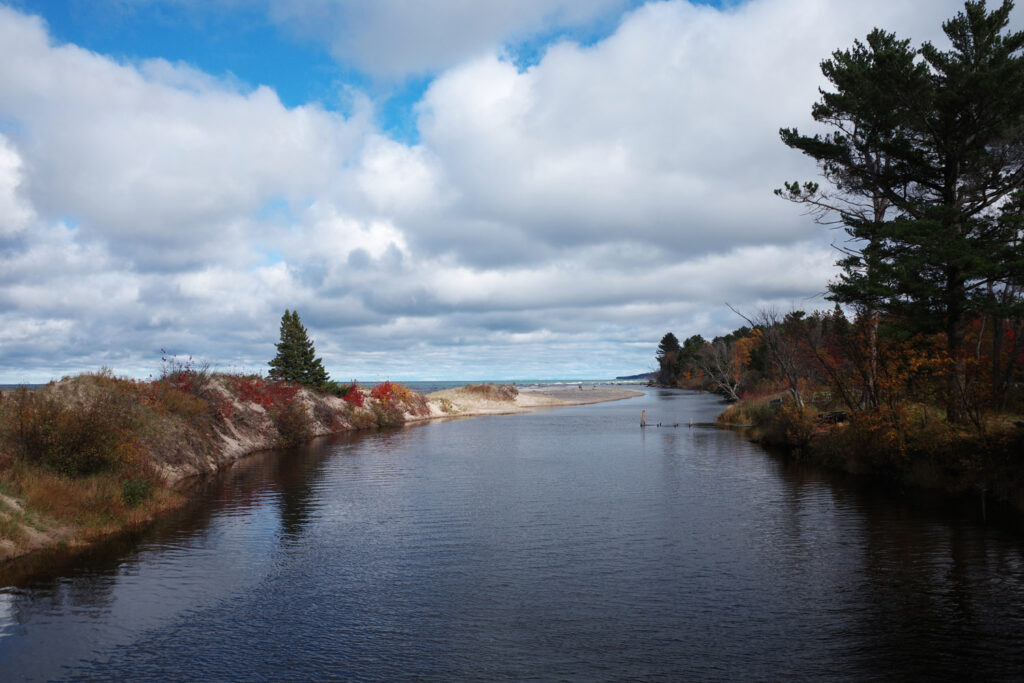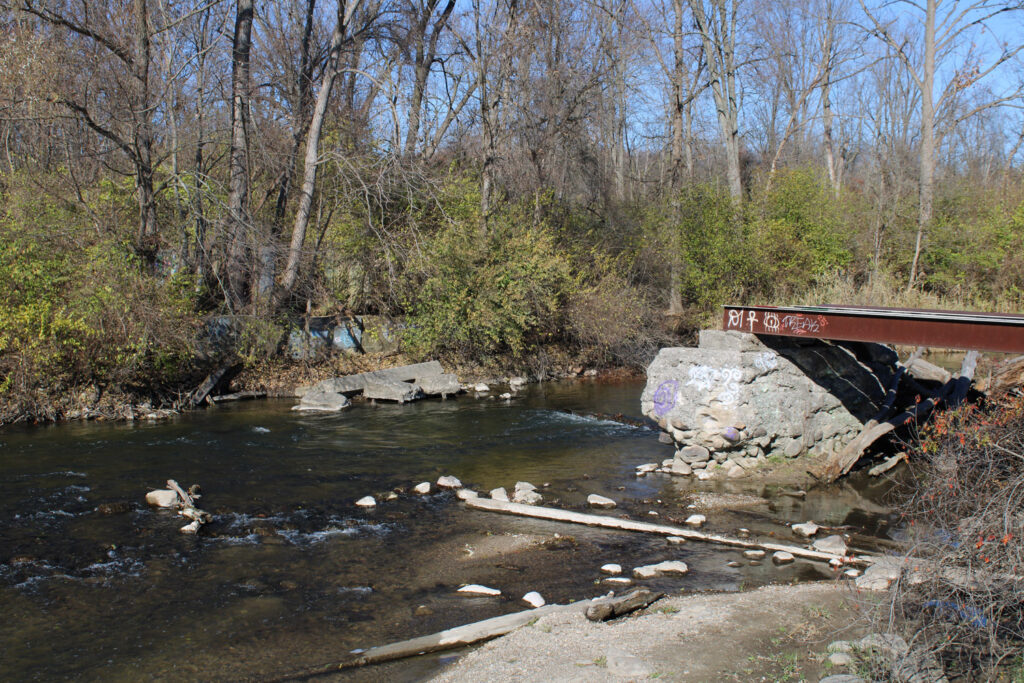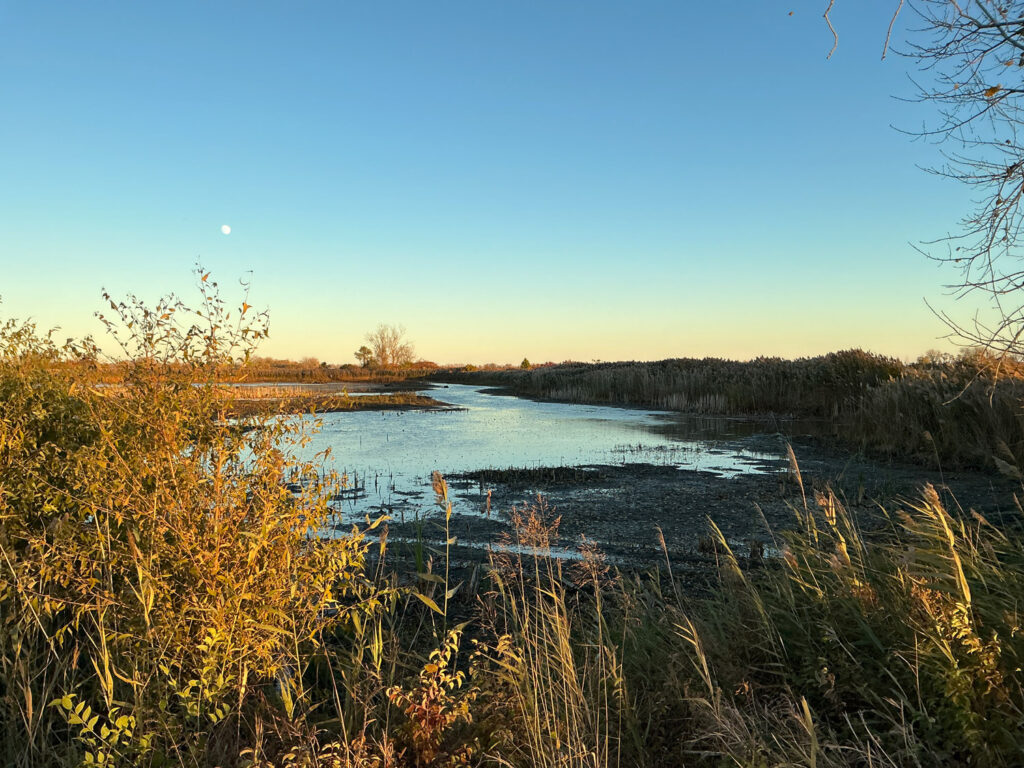Two Hearted River — Of the 24 famous Nick Adams stories penned by Ernest Hemingway in the early part of the 20th century, “Big Two-Hearted River” is one of the most beloved. Coarse, curt, and full with the characteristic style and sensibility Hemingway was known for, the story is quintessential Hemingway.
“Big Two-Hearted River” is, of course, set where the Two Hearted River runs: the northeastern corner of the Upper Peninsula. North of Tahquamenon Falls and east of Grand Marais, the Two Hearted River runs a curly course through Luce County, one of the least populated regions in a sparse strip of land.

It’s a quirk of literary history to note that the inspiration for Hemingway’s “Big Two-Hearted River” was actually, in fact, the Fox River near Seney. But the truth is this technical detail doesn’t really matter much. The name of the story is “Big Two-Hearted River” not Fox River. And the Two Hearted River today is far more similar in terms of development, or lack thereof, desolation, and spirit to the place and time described by Hemingway. Ultimately, the place we go when we read about Nick Adams is the Two Hearted River and nowhere else.
It’s hard for us to remain accurately aware of Hemingway’s influence. We all live after his revolution, so we often fail to appreciate, or understand, just how groundbreaking some of his work was. Some is so fresh that it feels like it could have been written two weeks ago. It’s Hemingway’s world; we are living in it.
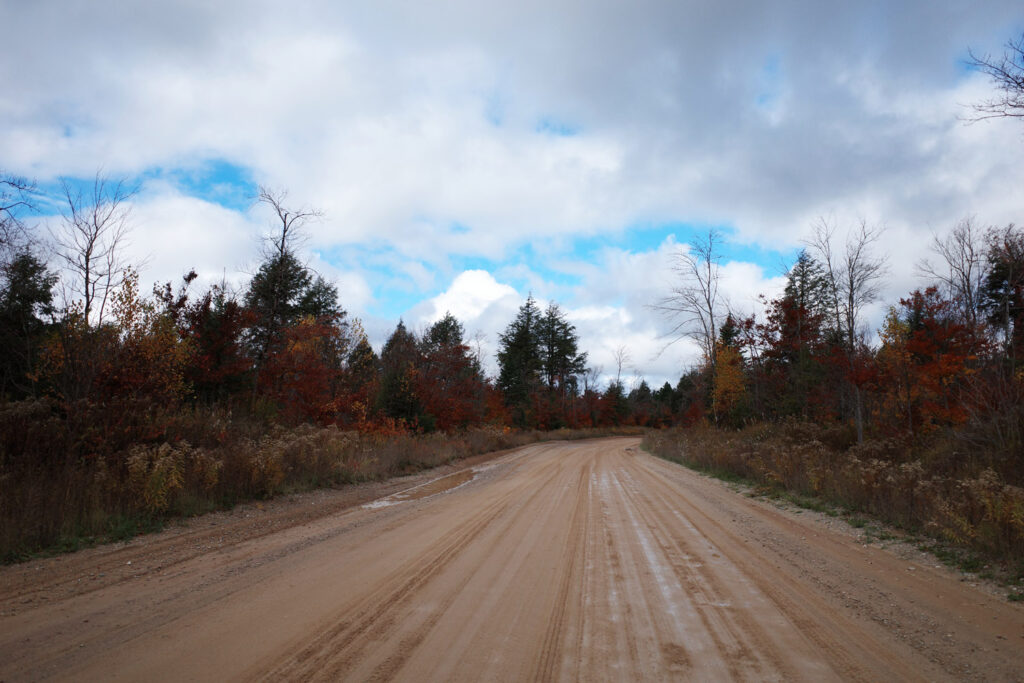
There’s a reason why, despite the Nick Adams stories being so permanently enshrined in the modern American canon of literature, so few readers have any personal experience with the places they were written about. Not many have the chance to experience anything of the physical environment in which they are set.
Few make it to places like Walloon Lake or Petoskey. Little Traverse Bay is far from Detroit and much farther from everywhere else. And, of course, of the Nick Adams stories, those places in the northern Lower Peninsula are some of the easier ones to reach by car in 2025. Two Hearted River is one of the harder ones, if not the hardest, to experience.
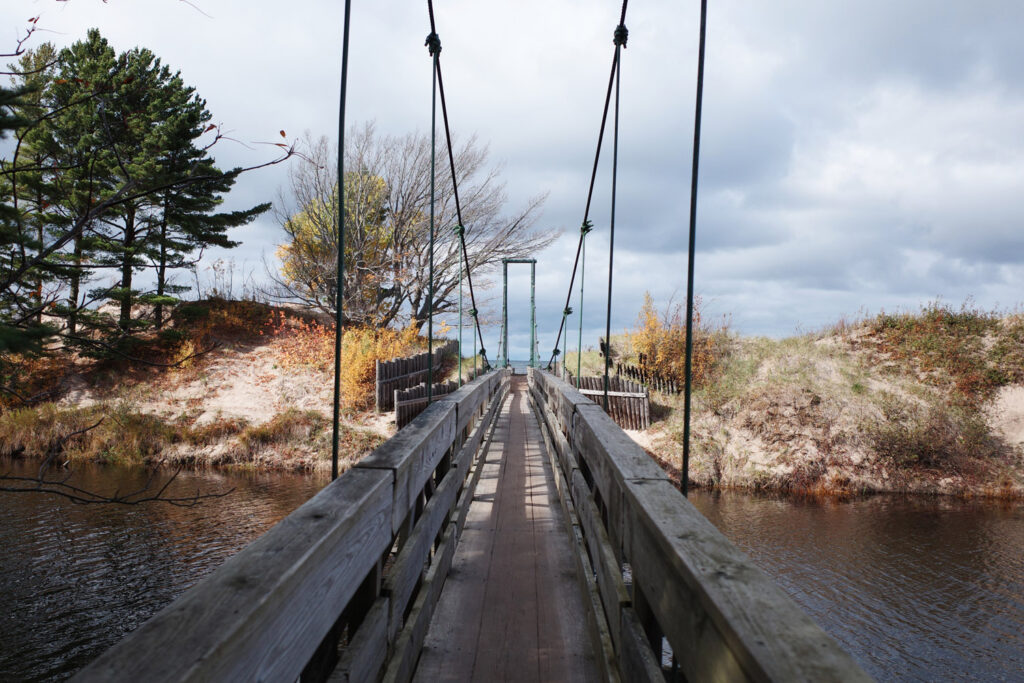
I never fully understood why, given that “Big Two-Hearted River” being based on an actual river in the Upper Peninsula, I had never really seen too many modern pictures of it on social media. I didn’t know why I hadn’t personally heard of anyone ever going there until I went myself.
The Two Hearted River winds through deep woods where there often aren’t any roads or any houses. There are a few places where a country road crosses the river or a cabin sits nearby, but it’s so barren up in this region that the number of access points are pretty few. The best is at the mouth of the Two Hearted River on Lake Superior.
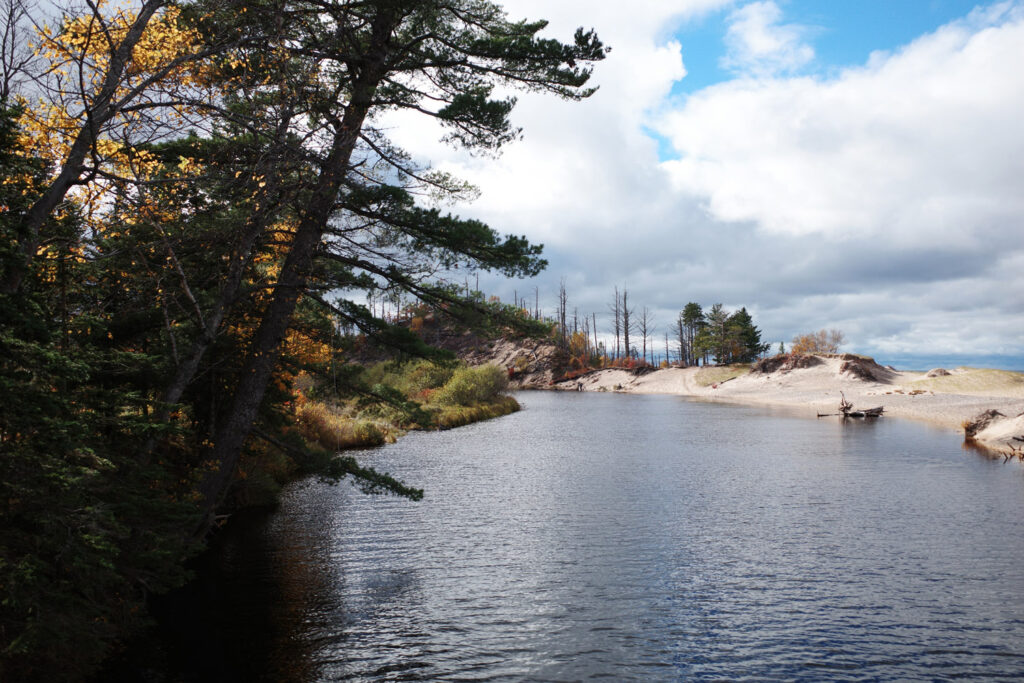
We came at Two Hearted River from the east. We took M-123 up to Paradise, headed west past Tahquamenon Falls, and turned right, heading north on Northwestern Road. It’s a rough dirt road with a few empty houses, though it must be said it’s not the worst of the dirt roads on the way north.
After about 6.5 miles, we headed west on Luce County Road 414. Luce County Road 414 is not a pleasant road. It’s a bad road, a very bad road. It’s one of the worst dirt roads I’ve driven in Michigan. It’s like a washboard at points and then soft like a dune at others. It had rained the day before, and there were portions of the road which had been washed out and were full of dirty water. There were no fewer than four points in which we risked getting stuck. If I hadn’t pushed it, going faster than I ever normally would on a dirt road, taking the soft sand with force, we might have easily ended up on the side of the road for a long time.
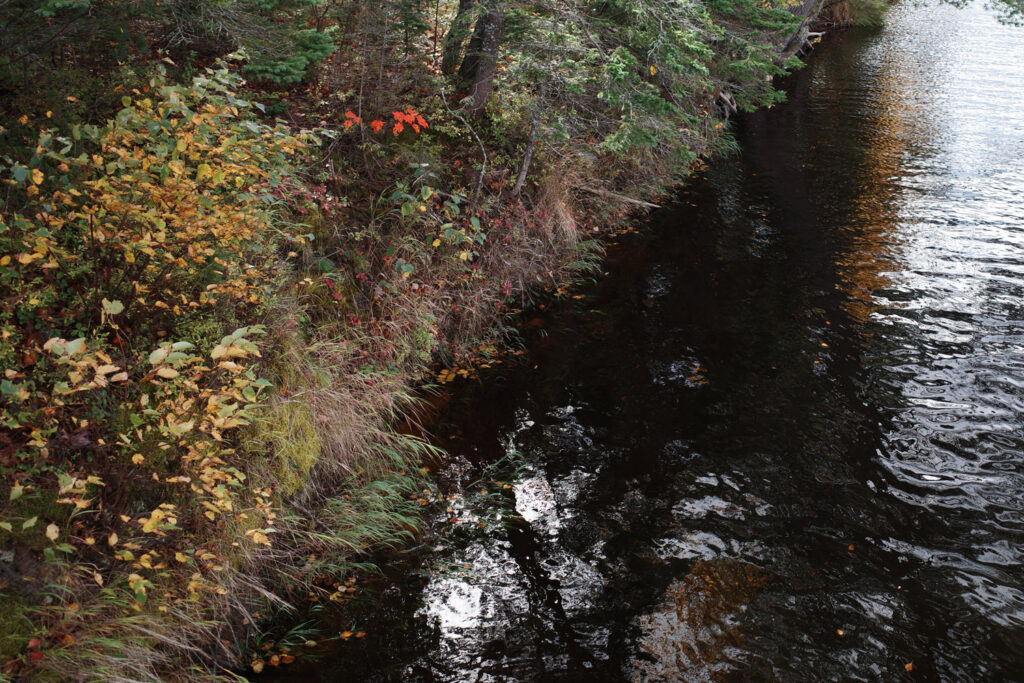
There are very few houses along 414. A cabin every once in a while and not much else. The two-track driveways dropped off the further west we went until there were none left. There’s no cell phone service. My iPhone read SOS most of the time. As we drove on, I made note of every moment a single bar of cell service briefly appeared so I might remember where we may have to walk to in the event we got stuck. A lot of Michigan is paved, a lot of Michigan has cellphone service, a lot of Michigan is busy enough so that you can be fairly certain that if you break down someone will come by on the road sometime in the next 24 hours. Not this far north. It’s still far away here.
Then we headed north on Luce County Highway 423, which is somehow even worse than 414. Still no cellphone service, a ton of soft sand, and washed-out dips. The only rougher kind of road might be a true two-track with weeds growing down the middle.
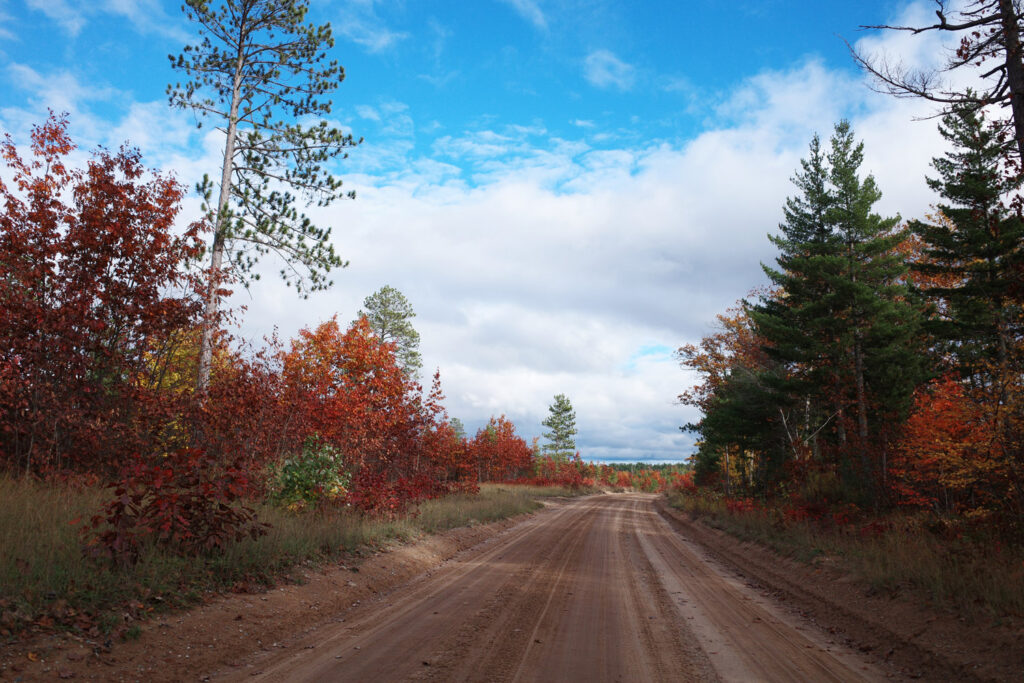
The country surrounding all these little roads in Luce County is naked and isolated. Northwestern Road cut through thick woods filled with tall trees and endless shade covering the forest floor. The farther northwest we went, the rougher the country grew. Sticky trees and pine. The land is hard and beat by the wind and the cold, with no one there to save it. Harsh, thick, and desolate is the land here. It’s almost eerily so.
At the end of the road are a few plain cottages that appear to be rented out in the summer, but were empty in October, a grass airfield, and a rustic campground. The only other people at the river that day were, poetically, a few fishermen standing near the very mouth, right where the river meets Lake Superior.

The sky was full of gray clouds, the leaves had changed their colors, the waves from Superior were strong, and the wind was bitter. Sticky trees stood out of the sandy soil. They looked over the rippling water below. The ripples on the water were quick in the wind. It was a cold wind.
In an almost painfully obvious way—a way too obvious not to mention—the actual scene and sense this far north in the deep woods mimics the very style of writing Hemingway pioneered in “Big Two-Hearted River” a century ago. No frills, no accouterment, no flourish, no fanfare. Bare, blunt, and honest.

Not many people come up here because it’s too hard and too far. The road is too bad. There are too many places that make you question the path or convince you to turn back. “Maybe it’s not worth it,” you wonder as the dashboard rattles and the tires bounce.
This is, again, another metaphor that is almost too obvious to mention yet certainly too obvious not to mention. It’s hard to come all the way up to Two Hearted River and it’s hard to write “Big Two-Hearted River.” Bare scene and soul. It’s not easy to go far; it’s not easy to write great. Not everyone will, not everyone can.
“Big Two-Hearted River” is a seminal story you couldn’t write about a place you can’t reach.
O.W. Root is a writer based in Northern Michigan, with a focus on nature, food, style, and culture. Follow him on X @OW_Root.
